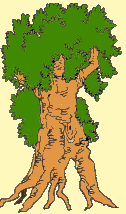ZEA MAYS
ZEA MAYS
ZEA MAYS
French: corn. Wolof: Mbook GOUN: Gbado
Maize is an annual tropical herbaceous plant of the Poaceae family, widely cultivated as a cereal for its starch-rich grains, but also as a fodder plant. The term also refers to the corn kernel itself, about the size of a pea.
This species, native to Central America, South America, and North America, was the staple of the diet of Native Americans before the arrival in America of Christopher Columbus., It is today cultivated worldwide and it became the world's leading cereal, ahead of rice and wheat
The single, large-diameter stem is full, lignified, and made up of several internodes of about twenty centimeters separated by as many nodes. At each node is inserted a leaf alternately on one side and the other of the stem. The leaves, typical of grasses, but large (up to 10 cm wide and one meter long), have a sheath encircling the stem and an elongated ribbon-like blade with parallel veins. At the base of the limbus is the ligule which is a few millimeters high. Unlike other grasses, the corn stalk does not tiller, however secondary stems, of limited size, are sometimes seen at the base of the main stem.
The flowers, another characteristic that distinguishes maize from other grasses, are unisexual and grouped into male and female inflorescences composed of spikelets of two flowers.
The female flowers are grouped in spikes inserted in the axils of the middle leaves (the largest). The axis of the cob, called the stalk, has 10 to 20 rows of female flowers. Only one flower per spikelet is fertile. It is surrounded by modified leaves, the spathes, which are dried out at maturity. At the upper end, the husks show thread-like stigmas or bristles. An ear can contain around 500 kernels at maturity, sometimes a thousand. Three or four spikes are produced from one plant, but usually only one reaches full development.
The male flowers are grouped in a terminal panicle which appears after the last leaf. This panicle is made up of spikelets each grouping two flowers with three stamens.
Maize currently has three main types of uses: animal feed, which is by far the main outlet (around two thirds overall) and mainly concerns industrialized countries, human food, which is particularly important in certain Third World countries, in particular sub-Saharan Africa and Latin America, and marginal in industrialized countries, and finally the agro-food industries, including for the production of alcohol as biofuels.
Maize is grown for its kernels, rich in starch (about 63%), which are the staple food of many populations.
Historically, corn was the staple food of all pre-Columbian civilizations. It has spread to other regions, in Europe and Africa, partially or totally replacing cereals consumed more widely in the past, such as millet and millet. In southern Europe, it was widely consumed in the past in the form of porridge (called "gaudes" in Bresse, crusade in Gascony, milhàs in Languedoc), constituting a cheap food for the peasant layers, often perceived negatively (in Italy, the term mangiapolenta is still strong to denote pejoratively the inhabitants of the Po plain).
It is eaten either as whole seeds (separated or on the cob), or reduced to the flour and prepared in the form of porridge or cooked pancakes.
In Central America, and particularly in Mexico, cornflour is used to make traditional pancakes called tortillas, which are widely consumed. They can wrap other foods, such as meat in tacos. Tamales, a type of papillotes of Native American origin, are also common in Latin America.
In the Andean countries, the Amerindians prepare a traditional fermented drink, chicha, from corn.
In Africa, corn is eaten grilled over a wood or charcoal fire (Kanoun), and also in the form of porridge or couscous, for example in Casamance
In Western countries, where corn plays a secondary role in human nutrition, it is increasingly consumed as a vegetable, in the form of sweet corn kernels. Sweet corn has become the fifth most important vegetable in France. It is packaged in several canned (canned), frozen or fresh ways, and is used in salads. The French consume 1 kg of it per year, far behind the Americans (7 kg). Popcorn (popcorn) is eaten as a snack or as an appetizer. Cornmeal is the basis of polenta, of Italian origin.
It is also used in the form of starch, that is to say, corn starch, sold in particular under the brand name Maïzena, in particular to prepare sauces. Cornstarch makes the sauce lighter than wheat flour.
Alcohol can be obtained from the fermentation of corn kernels which is used in particular, in addition to other sources, in the preparation of alcoholic beverages (gin, whiskey, bourbon, etc.).
Medicinal use:
The styles of the female inflorescence, very elongated filaments bearing the stigmas, called "corn hair" or "corn barbs", are listed in the traditional pharmacopeia for their cholagogue, diuretic, and antilithiasis properties. They are used as a decoction or liquid extract. Their vitamin K content also gives them anti-hemorrhagic properties. They also contain mannitol, fat, and mineral salts. The rootlets of sprouted seeds are used in gemmotherapy. Corn stigmas are diuretics, urinary tract sedatives, antihemorrhagics (vitamin K3), hypotensives, uterine stimulants, and immunostimulants. The roots are used to treat gas, bloating, gas, rheumatism, and sexual impotence.
Ajouter un commentaire























